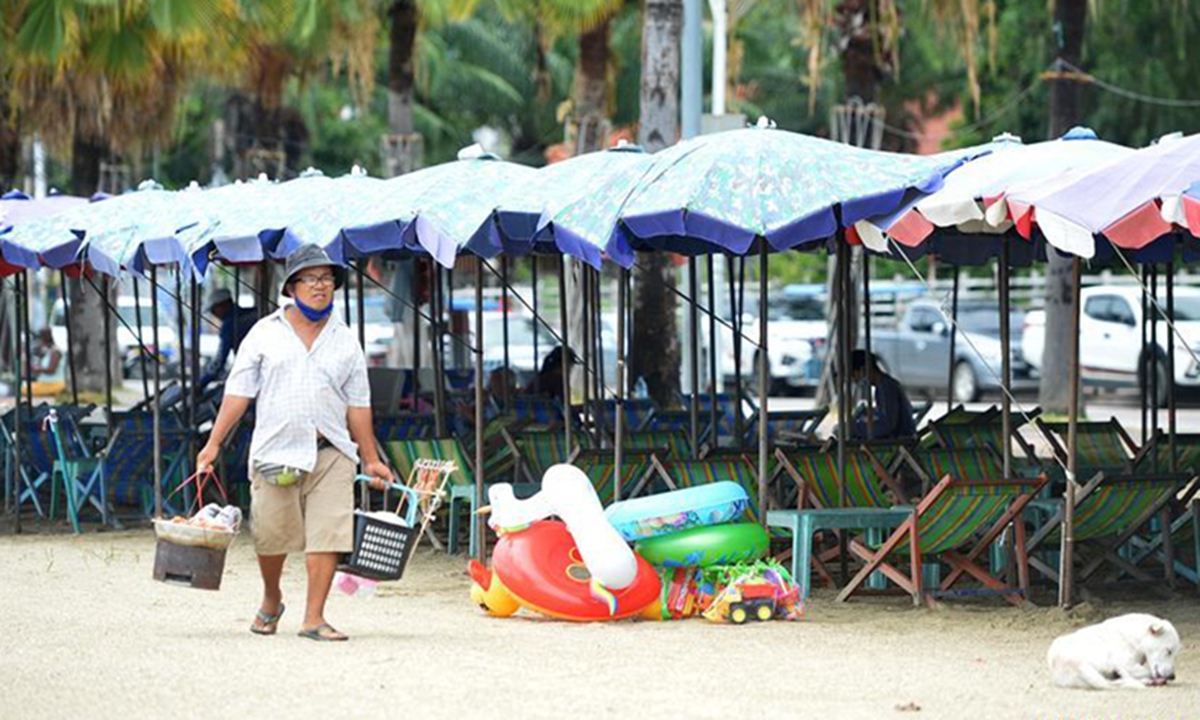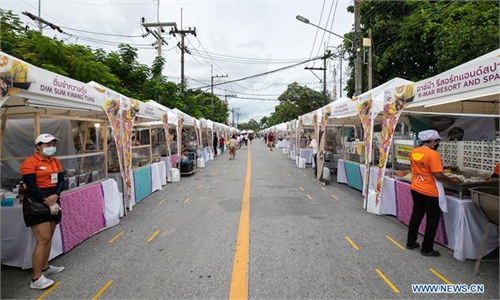
A vender carries food for sale at Pattaya beach in Chonburi province, Thailand, September 15, 2020. Photo: Xinhua
Thailand has become the first Southeast Asian country to relax tourism restrictions introduced during the combat against the coronavirus pandemic. Yet, a series of epidemic prevention and control requirements for tourists show that it is not so easy for Thailand to revive its tourism sector under the threat of an outbreak.
Last week, the Thai government unveiled a Special Tourist Visa plan to allow foreign tourists to enter, starting on October 1. The special visa will allow a stay for at least 90 days, and could be extended twice to a maximum stay of 270 days, a policy that is apparently designed to lure more long-stay visitors to help its tourism-reliant economy.
While the Southeast country may be eager to open its doors to foreign tourists, it also doesn't want to ruin the hard-won achievements in successfully bringing the outbreak under control, which is why it has set up a list of restrictions for foreign tourists that want to visit the country. These requirements and regulations are, of course, understandable, but they are also strict enough to demonstrate the complexities and difficulties that come with tourism recovery.
The Thai government first claimed that foreign tourists need to undergo a 14-day quarantine locally before starting their travel, with limited tourists' options. Then, on Friday, the Thai Ministry of Public Health unveiled its latest arrangement for visitors from abroad, who are required to have quarantined in their home country and provide proof of a negative COVID-19 test no more than 72 hours prior to travel.
These restrictions, particularly the time spent in quarantine, will undoubtedly have a significant impact on people's international travel decisions. This is also the reason why industry observers generally don't expect Chinese tourists' enthusiasm for Thailand to recover soon, even with China's National Day holidays set to begin on October 1.
In this sense, relaxing travel restrictions may be only the first step for Thailand's efforts to boost its tourism industry. How to enhance public confidence in tourism and strengthen international cooperation in tourism safety will be problems that need to be considered by not just Thailand but also other tourism-reliant Southeast Asian economies in the future.
Previously, Thailand and some other Southeast Asian countries proposed the idea of a "travel bubble," which would allow people to move across Southeast Asian countries that have successfully contained the virus. Yet, as new COVID-19 cases emerged in other parts of the region, Thailand reportedly shelved the plan last month. Some other Southeast Asian countries, such as Singapore, appear more cautious toward the idea of relaxing border restrictions in order to attract foreign tourists and prefer to pin hopes on domestic travel for the time being.
If the Thai government could succeed in reviving its tourism sector step by step, it will certainly serve as a model for regional tourism as a whole. Of course, it's not an easy task, as Thailand needs to be vigilant about any risk of coronavirus resurgence.



